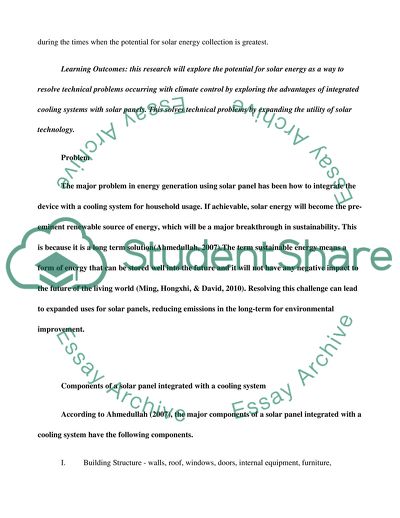Cite this document
(Integrating Solar Panels with a Cooling System Coursework Example | Topics and Well Written Essays - 2500 words, n.d.)
Integrating Solar Panels with a Cooling System Coursework Example | Topics and Well Written Essays - 2500 words. https://studentshare.org/engineering-and-construction/1828147-integrating-solar-panels-with-a-cooling-system
Integrating Solar Panels with a Cooling System Coursework Example | Topics and Well Written Essays - 2500 words. https://studentshare.org/engineering-and-construction/1828147-integrating-solar-panels-with-a-cooling-system
(Integrating Solar Panels With a Cooling System Coursework Example | Topics and Well Written Essays - 2500 Words)
Integrating Solar Panels With a Cooling System Coursework Example | Topics and Well Written Essays - 2500 Words. https://studentshare.org/engineering-and-construction/1828147-integrating-solar-panels-with-a-cooling-system.
Integrating Solar Panels With a Cooling System Coursework Example | Topics and Well Written Essays - 2500 Words. https://studentshare.org/engineering-and-construction/1828147-integrating-solar-panels-with-a-cooling-system.
“Integrating Solar Panels With a Cooling System Coursework Example | Topics and Well Written Essays - 2500 Words”. https://studentshare.org/engineering-and-construction/1828147-integrating-solar-panels-with-a-cooling-system.


